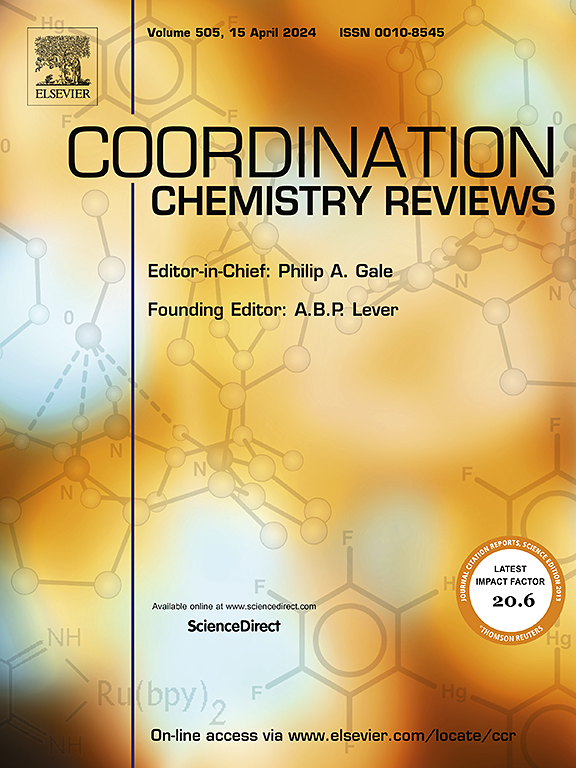Lanthanide-doped nanoprobes for microRNA detection
IF 20.3
1区 化学
Q1 CHEMISTRY, INORGANIC & NUCLEAR
引用次数: 0
Abstract
MicroRNAs (miRNAs), a sub-class of non-coding RNAs approximately 20–24 nucleotides in length, have emerged as valuable biomarkers for disease diagnosis and prognosis, and potential forensic evidence. Advances in lanthanide-doped nanoprobes offer great promise for sensitive miRNA detection due to their high photostability, long luminescence lifetimes, and large anti-Stokes shifts. This review provides a comprehensive overview of strategies for developing lanthanide-doped nanoparticle (LnNP)-based biosensors for miRNA detection. We begin by introducing miRNAs as biomarkers in disease diagnostics and discussing synthesis and surface modification approaches for upconversion nanoprobes. We then highlight various detection strategies using lanthanide-doped nanoprobes—including clustered regularly interspaced short palindromic repeats (CRISPR)-based, sandwich structure-based, energy transfer-based, and inductively coupled plasma (ICP)-based detection. Finally, we address current challenges, potential applications and future perspectives for LnNP-based biosensors and their potential for clinical translation.
微小 RNA(miRNA)是长度约为 20-24 个核苷酸的非编码 RNA 亚类,已成为疾病诊断和预后的重要生物标志物以及潜在的法医证据。掺杂镧系元素的纳米探针具有光稳定性高、发光寿命长、反斯托克斯位移大等优点,因此在灵敏的 miRNA 检测方面大有可为。本综述全面概述了开发基于掺镧纳米粒子(LnNP)的 miRNA 检测生物传感器的策略。我们首先介绍了作为疾病诊断生物标记物的 miRNA,并讨论了上转换纳米探针的合成和表面修饰方法。然后,我们重点介绍了使用掺杂镧系元素的纳米探针的各种检测策略--包括基于聚类规则间隔短回文重复序列(CRISPR)、基于夹层结构、基于能量转移和基于电感耦合等离子体(ICP)的检测。最后,我们探讨了基于 LnNP 的生物传感器目前面临的挑战、潜在应用和未来前景,以及将其应用于临床的潜力。
本文章由计算机程序翻译,如有差异,请以英文原文为准。
求助全文
约1分钟内获得全文
求助全文
来源期刊

Coordination Chemistry Reviews
化学-无机化学与核化学
CiteScore
34.30
自引率
5.30%
发文量
457
审稿时长
54 days
期刊介绍:
Coordination Chemistry Reviews offers rapid publication of review articles on current and significant topics in coordination chemistry, encompassing organometallic, supramolecular, theoretical, and bioinorganic chemistry. It also covers catalysis, materials chemistry, and metal-organic frameworks from a coordination chemistry perspective. Reviews summarize recent developments or discuss specific techniques, welcoming contributions from both established and emerging researchers.
The journal releases special issues on timely subjects, including those featuring contributions from specific regions or conferences. Occasional full-length book articles are also featured. Additionally, special volumes cover annual reviews of main group chemistry, transition metal group chemistry, and organometallic chemistry. These comprehensive reviews are vital resources for those engaged in coordination chemistry, further establishing Coordination Chemistry Reviews as a hub for insightful surveys in inorganic and physical inorganic chemistry.
 求助内容:
求助内容: 应助结果提醒方式:
应助结果提醒方式:


